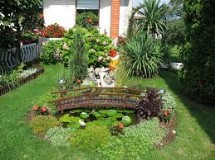Identification
Native to the Mediterranean, olive trees grow best in hot, dry weather that mimics their natural environment. They are winter hardy in U.S. Department of Agriculture plant hardiness zones 8 through 10, and under ideal conditions can grow to heights of 20 or 30 feet. They can, however, become invasive, so when growing them in their favored climate, take care to keep fruit from dropping, sprouting and spreading to wildlife areas.
Fungus Gnats
Although they were previously thought of only as greenhouse or houseplant pests, fungus gnats are also a problem for trees or crops growing outdoors. Young plants are especially susceptible to them, as larva feed on tender shoots and roots. Secondary damage occurs when pathogens enter the openings created by the gnats. Although fungus gnats are not specifically listed as a pest for olive trees, nearby breeding and feeding of fungus gnats could affect young olives or make it seem as if the gnats had infested the trees. Avoid moist substances, like compost or mulch, in areas where fungus gnats are a problem.
Olive Fruit Fly
One of the most serious pests for olive trees is the olive fruit fly, which looks like a gnat. When the fruit fly infests trees, its maggots or larvae feed inside the olive, destroying the pulp and making the fruit worthless. At the warmer end of the olive’s hardiness range, fruit flies may be a problem year round. In this case, the pest actually is coming from the olive tree, which hosts its entire life cycle.
Management
The best cultural control for pests is to harvest when fruit is ripe and clean up dropped fruit assiduously, to remove a possible breeding environment. If you don't plan to do anything with the olive’s fruit, consider planting another tree or plant a fruitless olive, which is just as beautiful but won’t flower or produce a mess. Since olives don’t tolerate saturated soils anyway, resist the temptation to water them to avoid providing habitat for fungus gnats or other pests.
SHARE







































